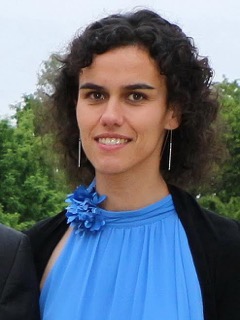Institut de Pharmacologie et de Biologie Structurale, Université de Toulouse, CNRS, Université Paul Sabatier, Toulouse Rational design of adjuvants targeting the C-type lectin Mincle PNAS, doi: 10.1073/pnas.1612421114 Decout, A., Silva-Gomes, S., Drocourt, D., Barbe, S., André, I., Cueto, F.J., Lioux, T., Sancho, D., Pérouzel, E., Vercellone, A., Prandi, J., Gilleron, M., Tiraby, G. & Nigou, J. (2017)
Cv
Alexiane Decout, 29 ans, a mené un cursus universitaire à l'interface chimie biologie. Elle a étudié en parallèle la chimie à l'Ecole Nationale Supérieure de Chimie de Montpellier et la biologie en échange ERASMUS à l'université de York (Grande-Bretagne). A l'issue de son stage de Master chez InvivoGen, elle a débuté une thèse en collaboration entre InvivoGen et l'équipe de Jérôme Nigou à l'Institut de Pharmacologie et de Biologie Structurale à Toulouse. Ces travaux portent sur l'étude des bases moléculaires et des conséquences fonctionnelles de l'interaction entre les mycobactéries et les lectines de type C Mincle, Dectine-1 et Dectine-2. Grâce à une approche multidisciplinaire, elle a mis en évidence le rôle prépondérant de la structure fine des acides gras dans la reconnaissance des glycolipides mycobactériens par Mincle. Ces données ont permis la conception rationnelle et la synthèse de nouveaux ligands spécifiques de Mincle. Ceux-ci qui induisent une réponse immunitaire supérieure à celle des ligands actuellement disponibles, tout en étant beaucoup moins toxiques, et représentent donc de nouveaux candidats adjuvants.
Contact
Alexiane Decout
Institut de Pharmacologie et de Biologie Structurale, Université de Toulouse, CNRS, Université Paul Sabatier, F-31077 Toulouse, France
The advances in subunit vaccines development have intensified the search for potent adjuvants, particularly adjuvants inducing cell-mediated immune responses. Identification of the C-type lectin Mincle as one of the receptors underlying the remarkable immunogenicity of the mycobacterial cell wall, via recognition of trehalose-6,6′-dimycolate (TDM), has opened avenues for the rational design of such molecules. Using a combination of chemical synthesis, biological evaluation, molecular dynamics simulations, and protein mutagenesis, we gained insight into the molecular bases of glycolipid recognition by Mincle. Unexpectedly, the fine structure of the fatty acids was found to play a key role in the binding of a glycolipid to the carbohydrate recognition domain of the lectin. Glucose and mannose esterified at O-6 by a synthetic α-ramified 32-carbon fatty acid showed agonist activity similar to that of TDM, despite their much simpler structure. Moreover, they were seen to stimulate proinflammatory cytokine production in primary human and murine cells in a Mincle-dependent fashion. Finally, they were found to induce strong Th1 and Th17 immune responses in vivo in immunization experiments in mice and conferred protection in a murine model of Mycobacterium tuberculosis infection. Here we describe the rational development of new molecules with powerful adjuvant properties.




